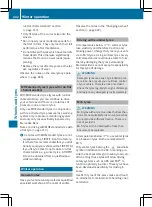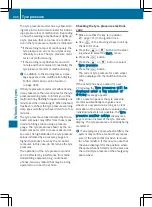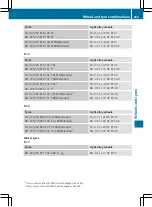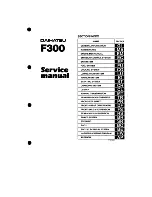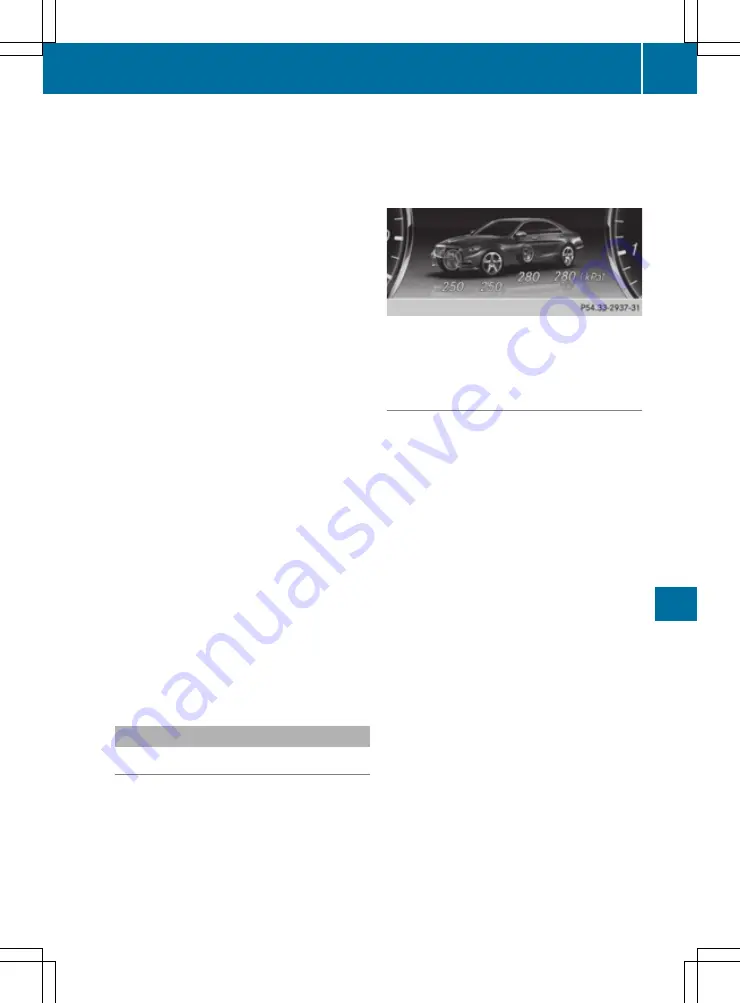
warm tyres. Only correct the tyre pressure if
it is too low for the current operating condi-
tions.
Driving with tyre pressure that is too high or
too low can:
R
shorten the service life of the tyres
R
cause increased tyre damage
R
have a negative effect on handling charac-
teristics and thus the driving safety (e.g.
aquaplaning)
i
The tyre pressure values given for low
loads are minimum values which offer you
good ride comfort characteristics.
However, you can also use the values given
for higher loads. These are permissible and
will not adversely affect the running of the
vehicle.
The values on the tyre pressure information
label (fuel filler flap) for the vehicle in "parti-
ally laden" and "fully laden" conditions apply
when driving at maximum speed.
Despite the values stated on the tyre pressure
information label, for the vehicle with "parti-
ally laden up to 210 km/h" status, the val-
ues can be reduced as follows, without com-
promising safety:
R
Ò
30 kPa (
Ò
0.3 bar/
Ò
4 psi) for all models
This does not apply to vehicles towing a
trailer.
This improves the ride comfort of your vehi-
cle; however, the fuel consumption may
increase slightly.
Tyre pressure monitor
General notes
If a tyre pressure monitor system is fitted, the
vehicle's wheels have sensors fitted that
monitor the tyre pressures in all four tyres.
The tyre pressure monitor warns you if the
pressure drops in one or more of the tyres.
The tyre pressure monitor only functions if
the corresponding sensors are fitted to all
wheels.
Information on tyre pressures is shown in the
multifunction display. After a few minutes of
driving, the current tyre pressure of each tyre
is shown in the
Serv.
Serv.
menu of the multifunc-
tion display, see illustration (example).
For further information on displaying this
message, refer to the "Checking the tyre pres-
sure electronically" section (
Y
page 446).
Important safety notes
It is the driver's responsibility to set the tyre
pressure to the recommended cold tyre pres-
sure suitable for the operating situation
(
Y
page 443). Note that the correct tyre pres-
sure for the current operating situation must
first be taught-in to the tyre pressure monitor.
If there is a substantial loss of pressure, the
warning threshold for the warning message is
aligned to the reference values taught-in.
Restart the tyre pressure monitor after
adjusting to the cold tyre pressure
(
Y
page 447). The current pressures are
saved as new reference values. This will
ensure that a warning message will only
appear if the tyre pressure drops significantly.
The tyre pressure monitor does not warn you
of an incorrectly set tyre pressure. Observe
the notes on the recommended tyre pressure
(
Y
page 443).
The tyre pressure monitor is not able to warn
you of a sudden loss of pressure, e.g. if the
tyre is penetrated by a foreign object. In the
event of a sudden loss of pressure, bring the
vehicle to a halt by braking carefully. Avoid
abrupt steering manoeuvres.
Tyre pressure
445
Wh
eels
and
ty
res
Z
Summary of Contents for 2013 S-CLASS
Page 2: ......
Page 3: ......
Page 5: ......
Page 33: ...30 ...
Page 119: ...116 ...
Page 163: ...160 ...
Page 191: ...188 ...
Page 372: ...Useful information 370 Stowage areas 370 Features 378 369 Stowing and features ...
Page 441: ...438 ...
Page 489: ...486 ...
Page 490: ...487 ...
Page 491: ...488 ...
Page 492: ......
Page 493: ......












